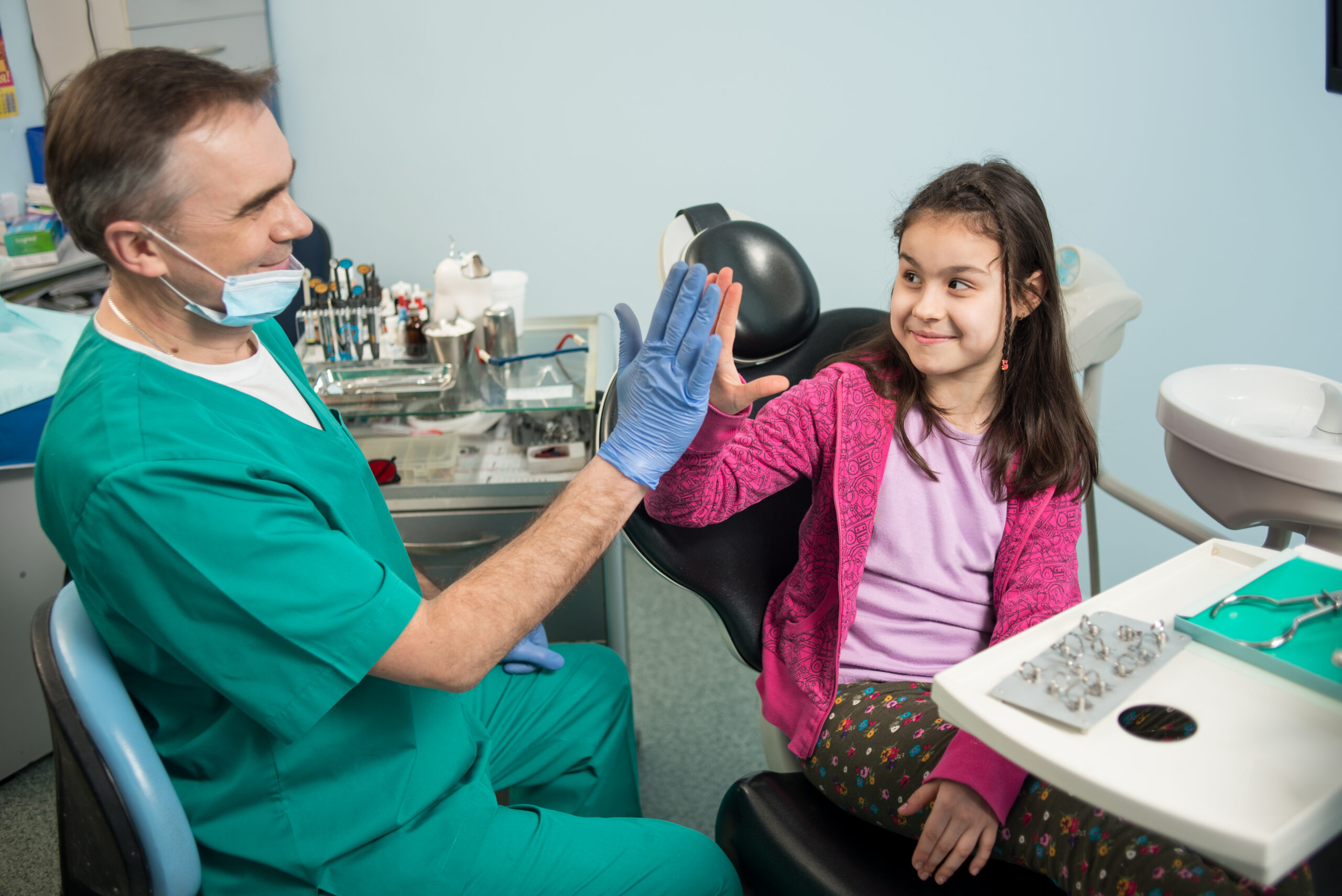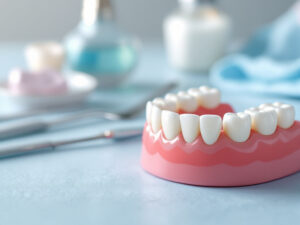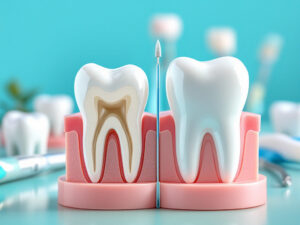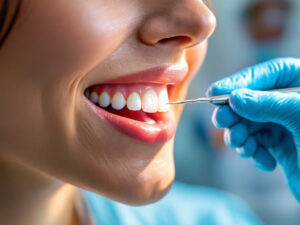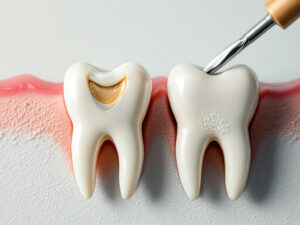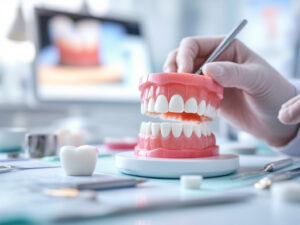Explore pediatric dental care basics
Pediatric dental care is about much more than just cleaning your child’s teeth. It sets the stage for lifelong oral hygiene habits, creates positive attitudes about dental visits, and addresses age-specific challenges such as cavities or gum issues. When you prioritize your child’s dental care early, you are giving them the best chance for optimal oral health in the years to come.
One of the first considerations in caring for your child’s teeth is simple awareness. You might be surprised how rapidly children’s teeth can show signs of decay, especially when brushing or flossing routines are inconsistent. According to the Centers for Disease Control and Prevention (CDC), cavities, also referred to as caries, remain one of the most common chronic diseases in childhood. Unfortunately, these issues can become more complicated as children grow older, potentially impacting speech, nutrition, and daily comfort.
The good news is that consistent, positive experiences with pediatric dentistry can empower your child to approach oral health in a proactive way. It helps them see the dentist as a supportive partner in keeping smiles bright and healthy, rather than a source of anxiety. By choosing a dental practice that focuses on family-inclusive care, you can ensure that your child’s unique needs are addressed. At Cloninger Dentistry, you can find everything from guidance on at-home routines to preventive treatments tailored to your child’s age and dental development.
Below, you will learn about the milestones to watch for in your child’s oral development, methods to instill healthy habits, ways to leverage preventive dental services, and practical advice for selecting a dental practice that suits your family. With a deeper understanding of these topics, you can confidently support your child’s oral health every step of the way.
Recognize key oral health milestones
Your child’s oral health evolves with each growth stage, from infancy through adolescence. By recognizing and preparing for these stages, you can help protect their teeth, prevent decay, and reinforce good habits that will continue into adulthood.
Understand early tooth eruption
Most children grow their first tooth around six months of age. However, some experience tooth eruption sooner, while others may take a bit longer. You may notice irritability or slight discomfort as the teeth push through the gums. Although these are expected signs of teething, it is still important to communicate with your pediatric dentist if you see unusual swelling or extended periods of discomfort. Early checkups, ideally before your child’s first birthday or upon the initial tooth’s appearance (American Academy of Pediatrics), can help ensure that each tooth develops properly, and they offer you a chance to learn about effective oral care routines.
When brushing the first few teeth, use a soft-bristled toothbrush and a tiny smear of fluoride-containing toothpaste. Since some toddlers resist brushing, try turning brushing into a game or using fun songs. The Centers for Disease Control and Prevention (CDC) also recommends seeking a dentist’s advice about the right amount of fluoride toothpaste for children under two years old. Fluoride, if used properly, can help prevent cavities, but it’s best to confirm the dosage with a professional.
Baby teeth and their role
Your child will gradually develop a full set of 20 primary (baby) teeth by the time they reach age three. Because these baby teeth eventually fall out, they are sometimes viewed as less important. However, baby teeth serve a critical function. They guide proper alignment for the permanent teeth that follow. They also help kids practice chewing and speaking clearly.
When decay sets in early, it can cause pain or even infections that also affect the gum tissue. These infections may influence the health of developing permanent teeth. According to the CDC, untreated cavities can lead to ongoing complications with eating, speaking, or learning. If your child experiences discomfort in a primary tooth, it is essential to address it promptly. Regular professional examinations and interventions such as painless cavity filling help preserve the stability of baby teeth and keep your child’s oral health on track.
Transition from baby to permanent teeth
Most children begin losing their baby teeth around age six, and this process continues through early adolescence. Permanent teeth appear in stages and each new tooth brings unique cleaning and monitoring needs. During this transition, your pediatric dentist may recommend specific preventive strategies, such as applying sealants to molars. Dental sealants help prevent food particles and bacteria from settling into the deep grooves on the chewing surfaces. In fact, sealants can prevent about 80% of cavities in back teeth (CDC).
It’s also common for children to have slight misalignments or spacing issues as the jaw expands and permanent teeth move into place. A pediatric dentist can detect early warning signs of crowding or bite problems, potentially avoiding more invasive orthodontic treatments later. By scheduling a routine dental checkup every six months, you can address these issues swiftly and maintain alignment as permanent teeth come in.
Common childhood oral health issues
Kids are susceptible to certain oral health challenges due to dietary habits, developing enamel, and varied hygiene practices. Here are a few of the most common concerns to keep in mind:
- Cavities or tooth decay: Caused by bacteria that feed on sugars and release acids which erode tooth enamel.
- Gum inflammation: Sometimes called gingivitis, it can result from inadequate brushing, flossing, or an unbalanced diet.
- Tooth sensitivity: Frequently stems from thin enamel or tooth grinding (bruxism), though it can also be caused by cavities or gum recession.
- Dental trauma: Accidents during play or sports can lead to chipped or loosened teeth, sometimes demanding emergency attention.
You can mitigate these concerns by encouraging diligent oral care practices at home and visiting your dentist regularly for early detection.
Meeting special healthcare needs
Some children have special healthcare needs, whether due to developmental, physical, or emotional considerations. According to Pediatric Dentistry West (Pediatric Dentistry West), trained pediatric dentists often tailor their environments and techniques to ensure your child’s comfort, including more flexible scheduling, sedation options, and specialized tools or equipment. Understanding these accommodations, along with your child’s unique triggers or stressors, can help create a stress-free experience at the dentist. This kind of approach not only addresses present oral health needs, but also cultivates confidence and positive associations with dental checkups.
Adopt healthy habits at home
Strong oral health starts with consistent routines in your household. Even if you schedule regular professional visits, day-to-day maintenance remains a cornerstone of keeping your child’s teeth and gums in top shape. Encouraging proper brushing, conscientious snack choices, and playful reinforcement can make all the difference in preventing tooth decay, especially in those younger years.
Daily brushing and flossing
The most fundamental step in pediatric dental care is regular brushing and flossing. From infancy, clean your baby’s gums gently with a wet, soft washcloth to remove any milk residue and keep the mouth fresh. As soon as a tooth appears, you can begin brushing it. By the time your child can hold a toothbrush, it is helpful to guide them to develop a thorough, two-minute brushing routine at least twice a day. Consider some of these strategies:
- Use child-friendly toothbrushes with soft bristles, and test out flavored toothpaste that might be appealing to picky young kids.
- Brush in gentle circles, reaching every surface of the tooth (front, back, and chewing surface).
- Once two teeth touch, introduce flossing to remove plaque from tight spaces.
- Supervise to ensure the process is complete, especially in the preschool years.
When flossing, you can try colorful flossers or floss picks if standard dental floss intimidates your child. The key is consistency. According to the CDC, brushing daily with fluoride toothpaste has been shown to reduce tooth decay significantly.
Balanced diets and limiting sugar
A child’s diet greatly affects oral health. Frequent consumption of sugary candies, sports drinks, and sugary fruit juice can foster bacteria-friendly environments that lead to cavities. Similarly, starchy foods convert to sugars in the mouth, contributing to the growth of harmful bacteria. It’s wise to:
- Limit sugary treats or reserve them for special occasions.
- Encourage water consumption, especially after meals, to rinse away food particles.
- Incorporate fresh fruits and vegetables that help stimulate saliva production and naturally clean teeth (apples, carrots, celery).
- Watch out for sticky treats, such as gummy candy or dried fruit, that stay on tooth surfaces longer.
The American Academy of Pediatric Dentistry recommends moderating carbohydrate-rich foods and limiting highly sweetened snacks to help preserve enamel and prevent decay. Simple changes in your child’s daily meals and beverage choices go a long way toward preventing avoidable cavities.
Turning oral care into fun
Motivating children to care for their teeth can feel like a challenge. However, you can transform these routines into something they look forward to:
- Use bright-colored toothbrushes that feature characters your child loves.
- Draw up a teeth-brushing chart with stickers or star rewards for consistency.
- Play a short song or use a timer to track the recommended two-minute duration.
- Read storybooks or watch videos about the “cavity monsters” to emphasize the importance of brushing.
By framing dental hygiene as a fun adventure or a moment of bonding, you reduce resistance and help your child develop lifelong oral care habits.
Invest in preventive measures
Visiting a pediatric dental care specialist on a regular schedule remains one of the most powerful approaches to preventing long-term issues. Preventive steps like sealants, fluoride treatments, and professional cleanings keep your child’s teeth strong. Equally important are consistent evaluations that catch potential problems before they escalate.
Embrace regular checkups and cleanings
A routine dental checkup is vital for preventing issues such as cavities, gum disease, and more. In addition to checking for decay, a pediatric dentist looks at the formation and alignment of new teeth, identifies any early signs of gum inflammation, and ensures the bite is developing correctly. These visits also present an ideal opportunity for you to ask questions or discuss any concerns you have about your child’s oral habits at home.
Professional teeth cleanings go deeper than daily brushing, removing residues and tartar buildup that can accumulate over time. Even children who brush well may miss tough-to-reach areas, which can eventually lead to plaque buildup. By scheduling regular professional teeth cleaning, you are giving the dental team a chance to remove stubborn plaque, polish teeth, and check for areas that need extra attention.
Role of fluoride and sealants
Fluoride is a naturally occurring mineral that strengthens tooth enamel and helps protect against cavities. Specialized products, such as a fluoride treatment, apply concentrated fluoride to clean teeth, boosting their resistance to acid attacks from bacteria. Fluoride is especially effective for children whose teeth are still developing. If your little one is prone to tooth decay or if your local water supply lacks sufficient fluoride, professional topical treatments can be a highly beneficial supplement to brushing with fluoridated toothpaste.
Dental sealants, typically placed on the chewing surfaces of the back molars, are another effective barrier against decay. Because these teeth have grooves where food can easily get trapped, they need additional protection. The CDC notes that sealants can prevent 33% of cavities in baby teeth and up to 80% in permanent molars. During your child’s next checkup, ask your dentist if sealants would be a good choice. This painless, quick procedure provides long-lasting defense against cavities in some of the most vulnerable areas.
Handling emergencies
Even the best preventive methods cannot guarantee that accidents will not happen. Children, especially those active in sports or outdoor activities, might suddenly crack or chip a tooth. They might also develop toothaches from unexpected decay or an infection. In these moments, emergency dental care becomes critical. Acting swiftly can reduce pain, preserve the tooth, and minimize complications such as abscesses or spreading infection.
In emergency situations, always contact your dental practice. If your child experiences a persistent toothache, your dentist may recommend toothache pain relief treatments or instruct you to come in for an immediate exam. If a tooth is chipped or loosened from a fall, preserving any fragments may help the dentist restore the tooth in a single visit.
Select the right dental practice
Entrusting a dentist with your child’s smile is a significant decision. You want a supportive environment that focuses on your family’s comfort, provides a wide range of services, and demonstrates expertise in handling children’s unique needs. With so many dental practices available, it helps to know which qualities and services make a real difference.
Consider a family-friendly approach
A truly family-oriented dental practice will acknowledge that your child’s needs evolve over time. At Cloninger Dentistry, the staff understands the importance of combining compassion, expertise, and a calm atmosphere for both children and adults. Right from the new patient dental exam, you will notice that the process is tailored to address concerns you or your child may have, whether it is about comfort in the chair or obtaining a clear treatment outline for the future.
A top concern for many families is cost. An insurance friendly dental practice can help you navigate your coverage options with minimal stress. Transparency about procedures, fees, and any recommended treatments fosters confidence. Understanding your insurance benefits and how they apply to pediatric procedures like sealants or fluoride treatments can significantly reduce out-of-pocket expenses. In some cases, you can explore flexible financing dental plans or request a written treatment estimate to clarify costs before any procedure begins. This way, you have peace of mind about what to expect.
Look for comprehensive services
When seeking a dental practice to partner with long-term, you want a place that can meet all your child’s evolving needs. For instance, a child with a severely decayed baby tooth might need a tooth extraction service, possibly a simple tooth extraction if the tooth is loose, or a surgical tooth extraction if the tooth is impacted. As your child ages, they might benefit from gum disease treatment should gingivitis develop, or they may require a root canal therapy if the tooth pulp becomes infected. By choosing a practice that offers multiple treatments, you can avoid jumping between specialists.
In some cases, a child might accidentally break a tooth or even lose it. Swift intervention with procedures like broken tooth repair or knocked out tooth treatment can keep your child’s smile fully intact. With these services readily available, it is easier to handle a broad range of dental contingencies without needing referrals to outside facilities.
Value of advanced technology
Dental imaging is a staple of pediatric dental care, helping the dentist see far beyond the surface. Practices that provide digital xray imaging can more precisely analyze your child’s teeth and detect early decay or structural abnormalities. Meanwhile, technologies like 3d imaging dental diagnostics offer comprehensive three-dimensional views. This is especially helpful for identifying growth patterns, bone density, and potential orthodontic concerns.
Another advanced tool is the intraoral camera examination, which allows you and your child to see clear pictures of teeth and gums in real-time. This transparency helps keep your child engaged, showing them exactly where plaque buildup occurs or how a small cavity looks, reinforcing why daily brushing and professional cleaning are so crucial.
Why Cloninger Dentistry
Cloninger Dentistry stands out for its commitment to ensuring a welcoming setting where children can feel at ease. Every staff member is dedicated to educating families about the unique challenges of pediatric dental care, including prevention strategies and potential treatment paths. By prioritizing your child’s comfort, oral health goals, and personal needs, Cloninger Dentistry aims to cultivate a positive relationship between your family and the dentist’s office.
The practice also provides preventative treatments and essential services, such as professional teeth cleaning, fluoride treatment, sealant application, and more. With easy scheduling options, timely reminders, and a warm, inviting environment, you can establish a consistent routine for checkups. That consistency is crucial for teaching your child that dental care is a normal, healthy part of life, rather than something to dread.
Frequently asked questions
Below are five common questions many parents ask. These answers are intended to give you clearer insight into pediatric dental care and what you can do to support your child’s dental health.
-
When should I take my child to the dentist for the first time?
Most experts suggest scheduling a first visit by age one or within six months after the first tooth emerges. Early visits give your dentist a chance to ensure teeth are erupting properly, address any initial concerns, and provide you with oral care guidelines tailored to your child’s age. -
How can I prevent cavities in my child’s baby teeth?
Cavities can develop quickly in baby teeth. Encourage regular brushing with a small amount of fluoride toothpaste and flossing when two teeth touch. Limit sugary snacks and drinks, and make sure your child visits the dentist at least twice a year for checkups. Fluoride treatments and dental sealants can also offer added protection against decay. -
What should I do if my child is scared of the dentist?
Fear often stems from the unknown. Reading child-friendly dental books, watching educational videos, or visiting the dentist’s office just for a “tour” without treatments can help build familiarity. You can also talk to your child about the process in a calm, upbeat way. If anxiety persists, discuss other methods such as sedation options with your dentist to ensure a comfortable visit. -
Are baby teeth really that important if they will fall out anyway?
Absolutely. Baby teeth serve as placeholders for permanent teeth, helping to guide alignment and support proper jaw growth. Neglected decay in baby teeth can lead to painful infections and potential alignment issues. Maintaining healthy primary teeth sets a strong foundation for your child’s permanent smile. -
Is fluoride safe for children?
In appropriate amounts, fluoride is safe and highly effective at strengthening tooth enamel. You should, however, consult your dentist for personalized recommendations. If your local water supply is fluoridated, you might adjust how much toothpaste your child uses. Your dentist may also suggest a professional fluoride application if your child is at higher risk of cavities.
Final thoughts
Your child’s smile deserves the best possible care, and establishing a reliable pediatric dental care routine is an investment in their long-term health. With early and consistent hygiene habits, balanced nutrition, and regular checkups, you give them the tools to prevent common problems such as cavities, gum disease, or toothaches. Addressing issues promptly and encouraging a positive attitude toward the dentist helps reinforce that good oral care is a lifelong priority.
At Cloninger Dentistry, you will discover a family-focused culture, where state-of-the-art technology and a compassionate team work hand in hand. As your child matures and their dental needs change, you can continue to rely on Cloninger Dentistry for services ranging from preventive care to advanced treatments, all under one roof. By choosing a practice that values education, comfort, and comprehensive care, you empower your child to maintain a smile that stays bright and healthy for years to come.

